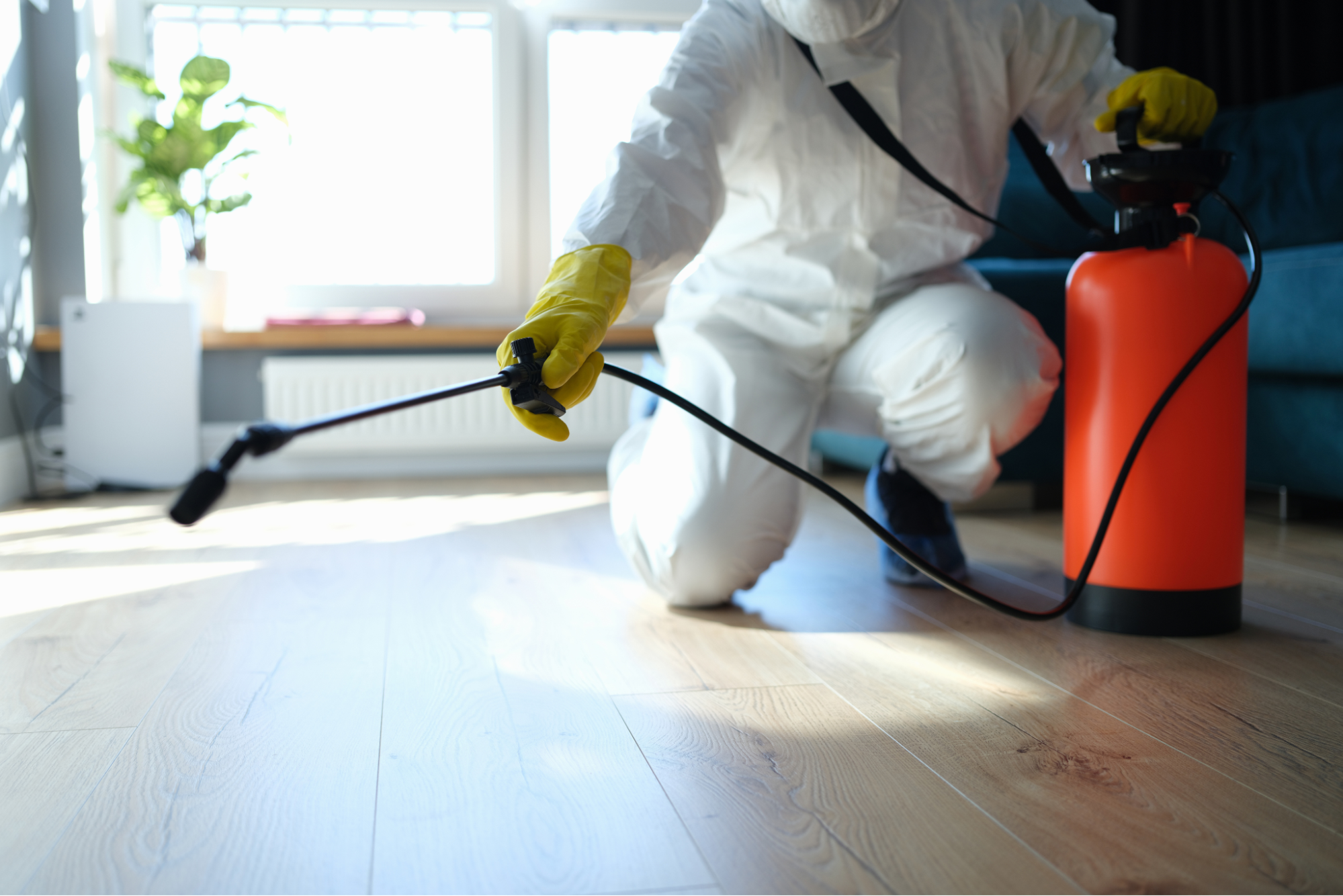A1 Pest Control Charlotte NC Bed Bugs - Expert Extermination Services
A1 Pest Control Charlotte NC Bed Bugs - Expert Extermination Services
Blog Article
Bed Pest Therapy Breakdown: Comparing Chemical Vs. Non-Chemical Solutions
In the world of insect control, especially when handling the persistent issue of bed bugs, the choice in between chemical and non-chemical therapy options can be a critical one. Both methods provide unique benefits and drawbacks, influencing variables such as effectiveness, security considerations, and overall cost. By examining the nuanced details of each method, a clearer understanding of which path to seek in addressing a bed bug infestation can be achieved.
Efficiency of Chemical Treatments
Chemical treatments for bed insect invasions have actually been commonly recognized for their rapid and potent efficacy in eradicating these pests. When thinking about the effectiveness of chemical treatments, it is vital to recognize that they can offer a comprehensive and quick remedy to a bed insect problem.
Furthermore, chemical therapies have the benefit of using residual effects, indicating that they can proceed to eliminate bed insects even after the first application. This residual action is particularly useful in combating any type of prospective re-infestations. In addition, the rapid activity of chemical treatments can bring alleviation to individuals dealing with severe bed insect infestations, enabling them to reclaim control of their space promptly.
Safety Interest In Chemical Solutions
One crucial facet that calls for cautious consideration when utilizing chemical solutions for bed pest therapy is making certain the safety of residents and the environment. While chemical therapies can be efficient in getting rid of bed pests, they might pose risks otherwise taken care of correctly. Among the primary safety and security concerns with chemical options is the possible harm they can trigger to human health. Direct exposure to certain chemicals made use of in bed bug treatments can lead to breathing problems, skin irritation, or various other negative responses, particularly in individuals with pre-existing conditions or sensitivities. In addition, incorrect application or dosage of chemical pesticides can cause poisonous deposits lingering in the cured area, posing lasting health and wellness threats to passengers.
In addition, the ecological impact of chemical remedies is one more substantial factor to consider. Some chemicals used in bed pest therapies might be damaging to useful pests, wildlife, and communities if they leach into the soil or water systems. It is necessary to make use of chemical treatments deliberately, complying with security standards, and taking into consideration less hazardous options to minimize these threats and make certain the risk-free and efficient administration of bed insect invasions.
Benefits of Non-Chemical Methods
Taking into consideration the possible safety and security concerns and environmental influence connected with chemical solutions for bed insect treatment, exploring non-chemical methods presents an encouraging alternative with several unique advantages. Non-chemical treatments are ecologically pleasant, as they do not add to air or water contamination, making them a lasting option for parasite control.
Furthermore, non-chemical services can be reliable in targeting bed pests, including hard-to-reach locations where chemical therapies might not penetrate. Methods such as heat treatment, vacuuming, vapor cleansing, and bed mattress coverings supply extensive elimination without using damaging chemicals. Furthermore, non-chemical approaches can be my site less disruptive, needing marginal preparation and allowing for quicker reentry right into dealt with locations. In general, opting for non-chemical bed bug therapy approaches not just focuses on security and environmental management yet additionally makes sure reliable and comprehensive parasite control.
Limitations of Non-Chemical Treatments

Furthermore, non-chemical treatments typically need numerous applications to attain effective obliteration. This can be time-consuming and may not always assure complete elimination of all bed bugs and their eggs, especially in covert or hard-to-reach areas.
Furthermore, the success of non-chemical therapies greatly depends on correct application and thoroughness, which can be challenging for people without specialist competence. Inadequate application of non-chemical approaches might find here result in insufficient elimination, causing persistent problems and the need for extra treatments.
Therefore, while non-chemical therapies have their benefits, it is important to acknowledge these restrictions and consider them when identifying the most efficient method for taking care of bed bug invasions.
Price Contrast: Chemical Vs. Non-Chemical Options
Provided the restrictions linked with non-chemical therapies, an important facet to evaluate in the context of bed bug management is the price contrast between chemical and non-chemical choices. In contrast, non-chemical treatments top article like warmth treatment or steam can be extra expensive, with prices ranging from $1,000 to $6,000 for a whole home. While the first expense of chemical treatments may appear reduced, multiple treatments might be called for to completely eliminate the infestation, potentially raising the total price.
Final Thought

Thinking about the potential safety concerns and ecological effect connected with chemical options for bed insect therapy, discovering non-chemical approaches offers an encouraging choice with a number of unique advantages.Given the constraints associated with non-chemical treatments, a vital element to assess in the context of bed insect management is the price comparison between chemical and non-chemical choices. In contrast, non-chemical therapies like heat therapy or heavy steam can be extra costly, with prices varying from $1,000 to $6,000 for a whole home. While the first price of chemical treatments might appear reduced, several treatments may be required to fully eliminate the invasion, potentially increasing the overall cost.In verdict, when contrasting chemical and non-chemical bed pest therapy alternatives, it is important to think about efficiency, safety and security, advantages, limitations, and expense.
Report this page